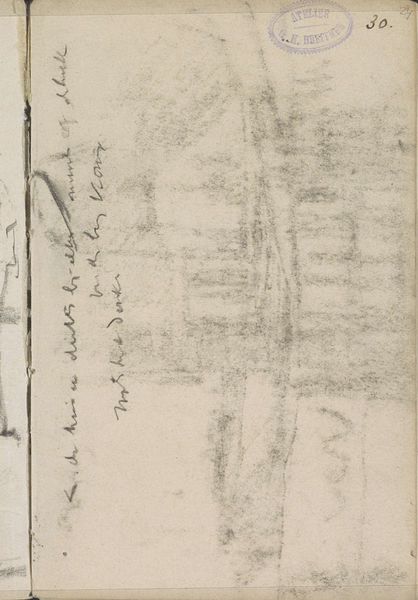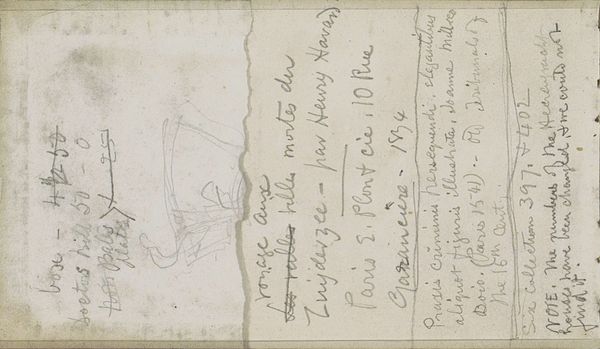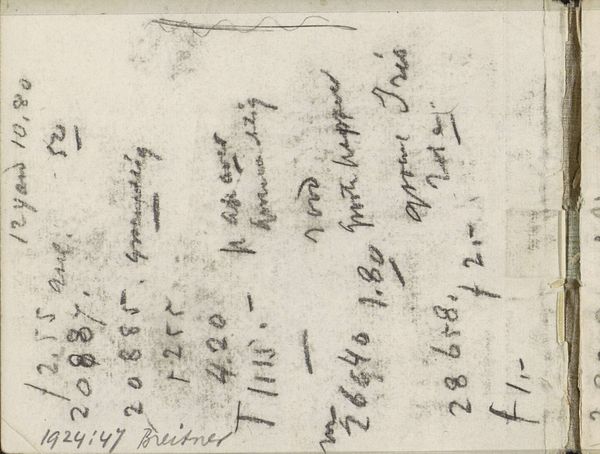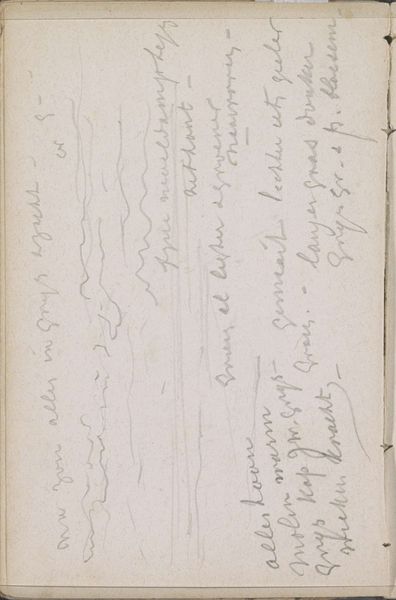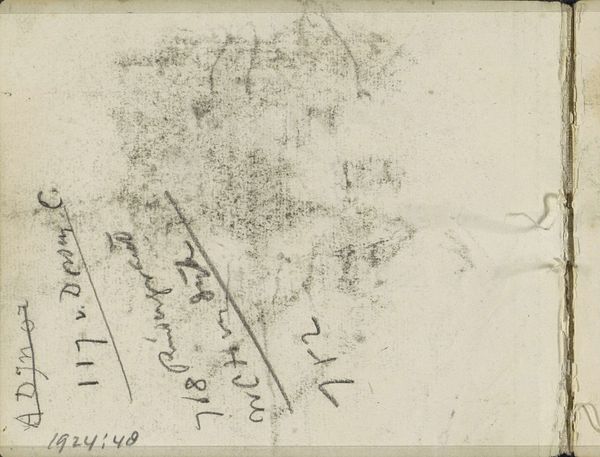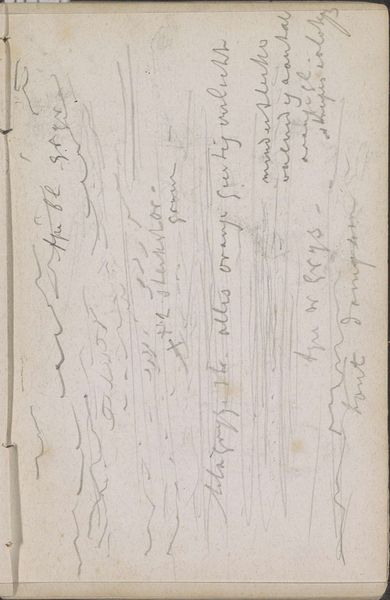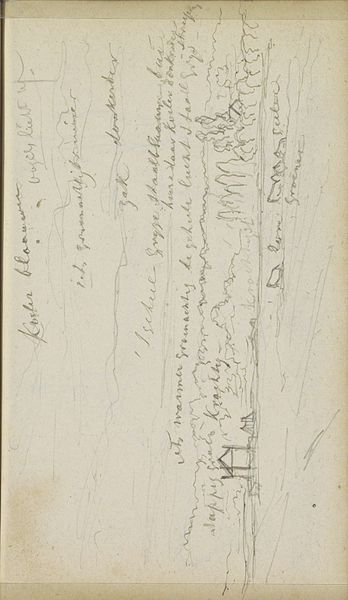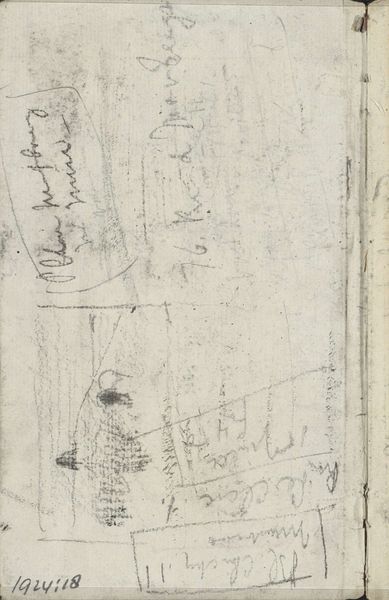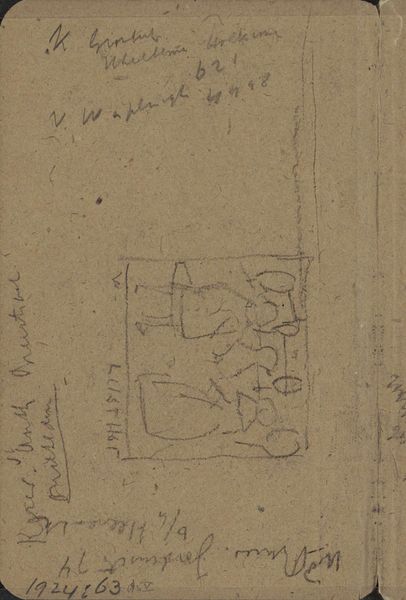
Copyright: Rijks Museum: Open Domain
Curator: This is a page from a sketchbook by George Hendrik Breitner, titled "Studie," dating from between 1886 and 1903, a landscape sketch in pencil on paper, housed at the Rijksmuseum. Editor: It feels… intensely personal. Raw, almost. Like glimpsing someone’s private thoughts, with the writing and loose sketching. Curator: Breitner's sketchbooks offer invaluable insight into his working methods. He was deeply invested in capturing the urban environment of Amsterdam and, by extension, Dutch society more broadly, as well as the material conditions he was immersed in. You can see the aged paper; a very palpable sense of time passing. Editor: I notice some text jotted down. What are we seeing? Is that related to his landscapes, or notes for later work? The placement almost seems to interrupt the vista rather than augment it. Was this commonplace? Curator: Breitner often made notes directly onto his sketches. He would annotate with observations, costs of materials, addresses, all sorts of relevant material, often for further use in more developed pieces. He embraced working-class subject matter at a time of industrial change. So these pages served multiple functions, as both documents and creative springboards. Editor: It's interesting how accessible sketchbooks make art feel. They demystify the art-making process. But the “art market” tends to elevate “finished” works over studies. The notion that sketchbooks, despite being central to production, remain behind-the-scenes, only truly seen at institutions such as the Rijksmuseum, I find it curious that artistic value continues to privilege outcomes over the process itself. Curator: Absolutely, the market does have an impact, favoring the polished and final forms. Breitner’s social realism often focused on everyday life. How the elite institutions shape our perceptions and interactions with these sketchbooks truly shows a tension between high art and, like, an object of pure social document. The commodification of such intimately personal artistic material…it has real-world impacts on cultural narratives and our view of labor and creative means. Editor: Right. I can almost imagine him right there, on the spot, capturing what he was seeing. And he probably wouldn’t have conceived it being studied in this way now! Curator: These initial sketches reveal a world often overlooked. Editor: I'm left thinking about the life of objects: from material procurement and production by Breitner to their presentation and perception through galleries today, tracing the path from a single sketch, now being studied today as something more.
Comments
No comments
Be the first to comment and join the conversation on the ultimate creative platform.
